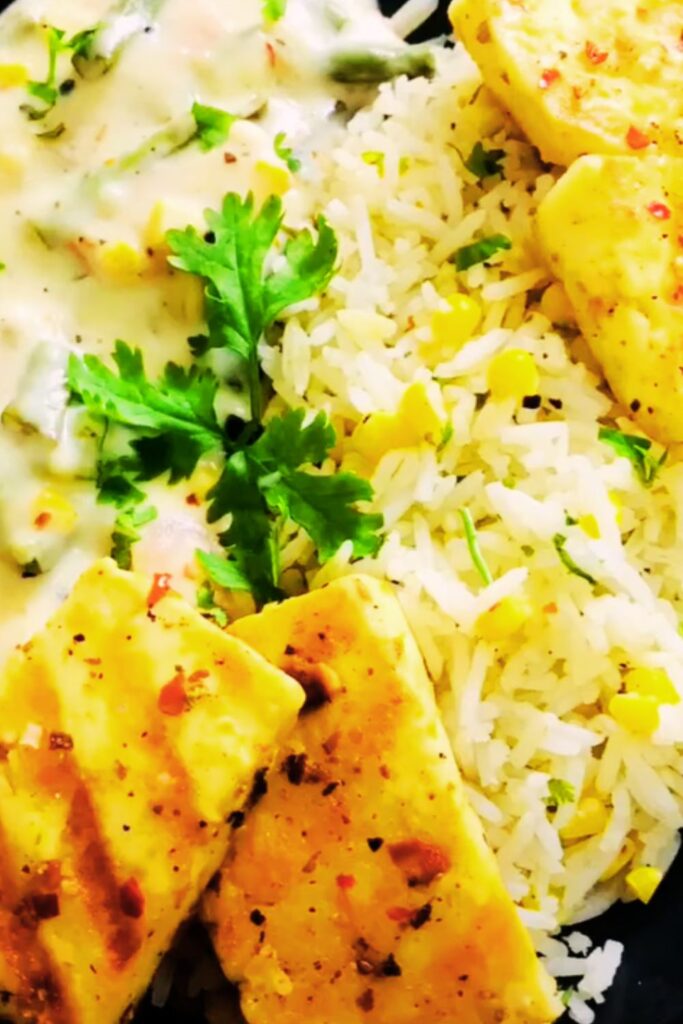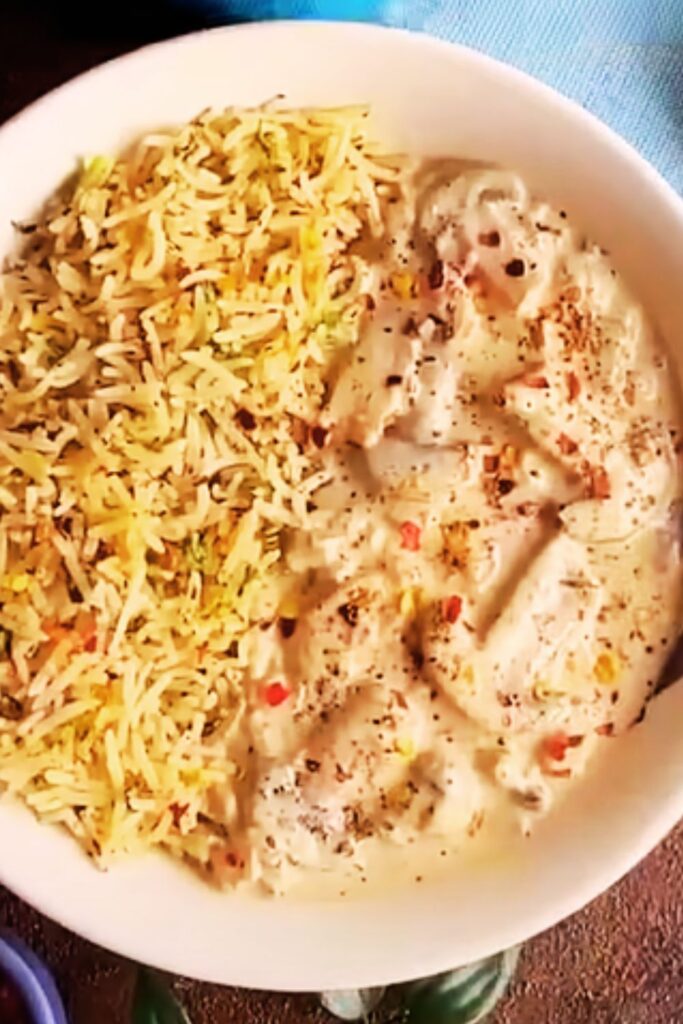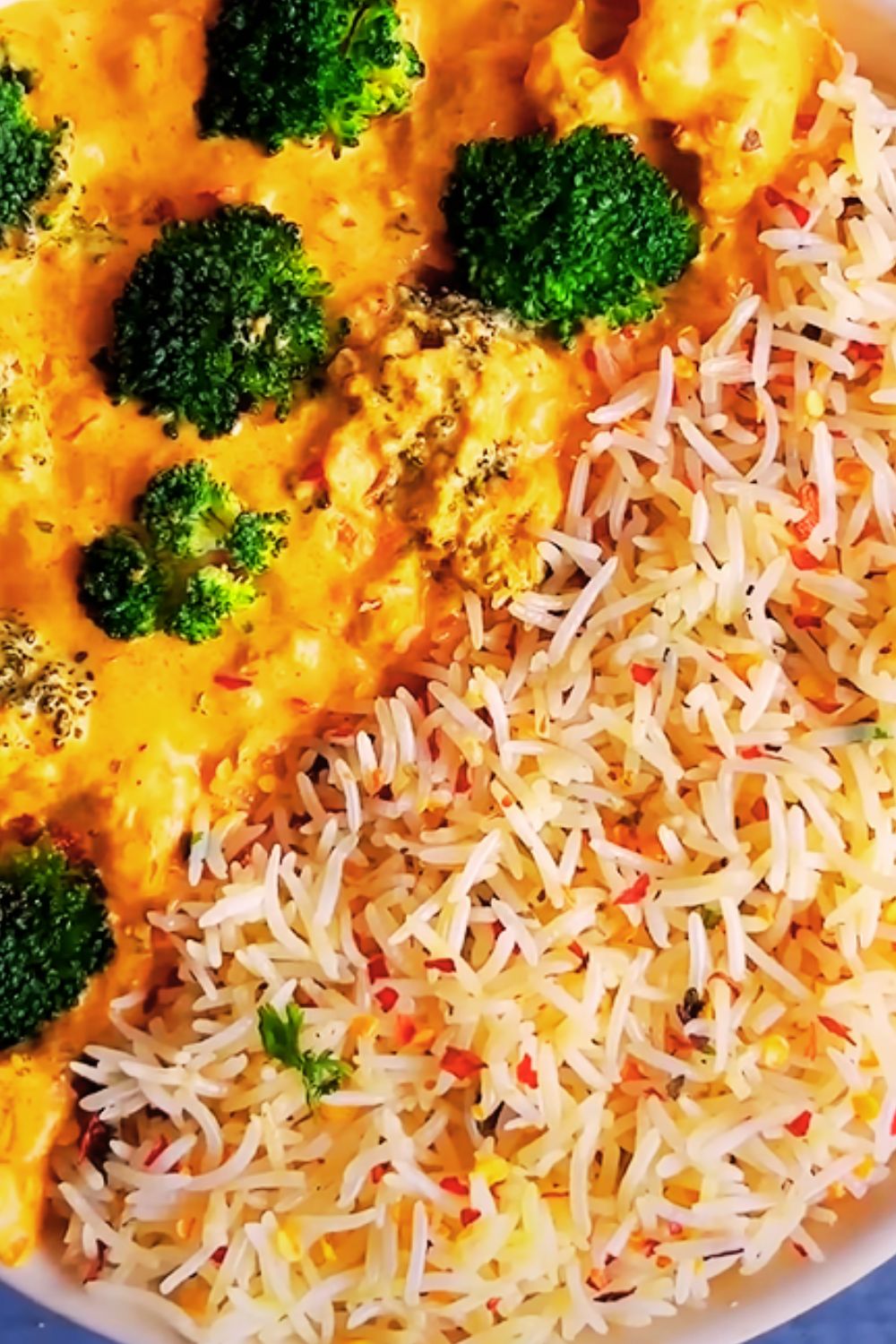Have you ever found yourself staring at a plain bag of rice, wondering how to transform those humble grains into something spectacular? I certainly have! After years of experimenting in my kitchen, I’ve perfected what I consider the ultimate side dish: Herb Lemon Rice. This recipe takes ordinary rice and elevates it with bright citrus notes and fragrant herbs that will make your taste buds dance.
What I love most about this dish is its versatility. It pairs beautifully with nearly everything from grilled fish to roasted vegetables, and it’s sure to brighten up any meal. Plus, it’s incredibly simple to make, requiring minimal effort for maximum flavor payoff.
The Magic of Aromatics in Rice
Before diving into the recipe itself, I want to share what makes this herb lemon rice truly special: the careful balance of aromatics. When cooking rice, many home cooks miss the opportunity to infuse the grains with flavor from the very beginning.
In this recipe, we’ll use a combination of:
- Fresh herbs (not just one, but several complementary varieties)
- Bright lemon zest and juice (for that perfect citrus punch)
- Aromatic garlic and shallots (for depth of flavor)
- Quality broth instead of water (for an extra layer of taste)
The result is rice that’s anything but boring—each grain becomes a vessel for delivering those wonderful Mediterranean-inspired flavors.
Ingredients You’ll Need
For this recipe, I’m passionate about using fresh ingredients whenever possible. The quality of your herbs and lemons will significantly impact the final dish.
For the base:
- 2 cups basmati or jasmine rice (long-grain works best)
- 3½ cups chicken or vegetable broth (homemade if possible)
- 2 tablespoons extra virgin olive oil
- 1 medium shallot, finely diced
- 2 cloves garlic, minced
- 1 teaspoon sea salt (adjust to taste)
- ¼ teaspoon freshly ground black pepper
For the herb lemon mixture:
- Zest and juice of 2 large organic lemons
- ¼ cup fresh parsley, finely chopped
- 2 tablespoons fresh dill, finely chopped
- 2 tablespoons fresh chives, finely chopped
- 1 tablespoon fresh thyme leaves
- 1 tablespoon fresh mint, finely chopped (optional)
- 2 tablespoons extra virgin olive oil
- ½ teaspoon sea salt
Step-by-Step Cooking Instructions
I’ve broken down the process into easy-to-follow steps. The key to perfect herb lemon rice lies in the timing—when to add the aromatics and herbs to maximize their flavor.
Preparing the Rice:
- Rinse the rice thoroughly under cold water until the water runs clear. This removes excess starch and prevents the rice from becoming gummy.
- If time allows, soak the rinsed rice in cold water for 30 minutes, then drain well. (This step is optional but helps achieve perfectly separate grains.)
- In a heavy-bottomed pot or Dutch oven, heat 2 tablespoons olive oil over medium heat.
- Add the diced shallot and sauté for 2-3 minutes until translucent.
- Add the minced garlic and cook for another 30 seconds until fragrant, being careful not to brown it.
- Add the drained rice to the pot and stir to coat each grain with the oil mixture, toasting slightly for 1-2 minutes.
- Pour in the broth, add 1 teaspoon salt and the black pepper, and stir once.
- Bring to a boil, then reduce heat to low, cover with a tight-fitting lid, and simmer for 15-18 minutes (depending on your rice variety).
- Once the cooking time is complete, remove from heat but keep covered. Let the rice rest, undisturbed, for 10 minutes.
Preparing the Herb Lemon Mixture:
While the rice is cooking or resting, prepare your herb lemon mixture:
- In a medium bowl, combine the lemon zest, lemon juice, all chopped herbs, 2 tablespoons olive oil, and ½ teaspoon salt.
- Mix well and let sit for at least 5 minutes to allow the flavors to meld.
Finishing the Dish:
- After the rice has rested, fluff it gently with a fork.
- Add the herb lemon mixture to the rice.
- Fold everything together carefully with a rubber spatula to avoid breaking the rice grains.
- Taste and adjust seasonings if needed.
- Transfer to a serving dish and garnish with additional fresh herbs and lemon slices if desired.

Rice Varieties: Finding Your Perfect Match
Not all rice varieties will yield the same results in this recipe. I’ve experimented with several types and discovered that each brings something unique to the dish.
| Rice Variety | Texture | Cooking Time | Flavor Absorption | Best Used For |
|---|---|---|---|---|
| Basmati | Light, fluffy, separate grains | 15-18 minutes | Excellent | Elegant presentations, when grain separation matters |
| Jasmine | Slightly sticky, aromatic | 15-18 minutes | Very good | Casual meals, when a slight stickiness is desired |
| Long-grain white | Fluffy, separate grains | 15-20 minutes | Good | All-purpose use, budget-friendly option |
| Arborio | Creamy, risotto-like | 20 minutes | Limited | When a creamy texture is desired (changes the nature of the dish) |
| Brown basmati | Chewy, nutty | 35-40 minutes | Good, but needs more liquid | Health-focused meals, requires cooking time adjustment |
I personally prefer basmati rice for this recipe as it produces beautifully separated grains that showcase the herbs perfectly. The long, slender grains create an elegant presentation, and basmati’s natural aroma complements the lemon and herbs wonderfully.
Herb Variations and Substitutions
One of the reasons I love this recipe is its adaptability. You can easily customize the herb blend based on what’s available or your personal preferences.
Classic Mediterranean Blend (as written in the recipe):
- Parsley
- Dill
- Chives
- Thyme
- Mint (optional)
Greek-Inspired Variation:
- Double the dill
- Add 1 tablespoon fresh oregano
- Omit the thyme
- Add 2 tablespoons crumbled feta cheese at the end
Italian-Inspired Variation:
- Double the parsley
- Add 1 tablespoon fresh basil
- Add 1 tablespoon fresh rosemary (chopped very finely)
- Omit the dill
- Add 2 tablespoons toasted pine nuts at the end
Herb Availability Guide:
I know that not everyone has access to fresh herbs year-round. Here’s my guide to working with what you have:
| Herb | Fresh to Dried Conversion | Frozen Option? | Store-Bought Substitute |
|---|---|---|---|
| Parsley | 1 tbsp fresh = 1 tsp dried | Yes, works well | Italian herb blend (in moderation) |
| Dill | 1 tbsp fresh = 1 tsp dried | Yes, works well | Fennel fronds can work in a pinch |
| Chives | Hard to substitute when dried | Yes, works well | Green onion tops (not the same but workable) |
| Thyme | 1 tbsp fresh = 1 tsp dried | Yes, works well | Dried thyme is a good substitute |
| Mint | Best used fresh | Not ideal frozen | Omit if unavailable |
Important note: If using dried herbs, add them earlier in the cooking process—specifically when you add the broth to the rice. This gives them time to rehydrate and release their flavors.
Troubleshooting Common Rice Problems
Even experienced cooks sometimes encounter issues with rice. Here are solutions to the most common problems:
Rice Too Mushy?
- Likely causes: Too much liquid, overcooked, or stirred during cooking
- Solution: Reduce liquid by ¼ cup next time, and ensure you’re using the correct rice-to-liquid ratio for your specific rice variety
- Quick fix: Spread on a baking sheet and place in a 300°F oven for 5-10 minutes to dry out slightly
Rice Too Dry or Undercooked?
- Likely causes: Not enough liquid, cooking temperature too high, or lid not tight enough
- Solution: If you catch it early, add ¼ cup hot broth or water, cover, and let sit off heat for 10 minutes
- Prevention: Make sure your pot has a tight-fitting lid; use a kitchen towel under the lid if necessary to create a better seal
Rice Sticking to the Pot?
- Likely causes: Heat too high, not enough oil, or pot too thin
- Solution: Use a heavy-bottomed pot, ensure adequate oil when toasting the rice, and keep heat low during the covered cooking phase
- Quick fix: Let the pot cool slightly, then gently loosen the rice with a wooden spoon

Making Ahead and Storing
This herb lemon rice actually improves with a bit of time, making it perfect for meal prep or entertaining.
Make-Ahead Options:
Option 1: Partially make ahead (my preferred method)
- Cook the rice as directed through the resting phase
- Prepare the herb lemon mixture separately and refrigerate
- Combine the two components up to 2 hours before serving
- Reheat gently in the microwave or covered in a 325°F oven for about 15 minutes
Option 2: Fully make ahead
- Prepare the complete dish as directed
- Cool completely before refrigerating
- Store in an airtight container for up to 3 days
- Reheat with a splash of water or broth to refresh the texture
Storage Guidelines:
| Storage Method | Maximum Time | Special Instructions |
|---|---|---|
| Refrigerator | 3-4 days | Store in airtight container |
| Freezer | 1 month | Portion into serving sizes before freezing; thaw overnight in refrigerator |
| Room temperature | 2 hours maximum | Not recommended for longer storage due to food safety concerns |
When reheating, I find a light sprinkle of water and a fresh squeeze of lemon juice brings back the vibrant flavors.
Serving Suggestions
This herb lemon rice pairs beautifully with so many main dishes. Here are some of my favorite combinations:
Seafood Pairings:
- Grilled salmon with a simple lemon butter sauce
- Garlic shrimp skewers
- Mediterranean-style baked cod
- Seared scallops with herbs
Poultry Pairings:
- Lemon garlic roasted chicken
- Greek-style chicken souvlaki
- Herb-marinated turkey cutlets
- Middle Eastern spiced chicken thighs
Vegetarian Pairings:
- Roasted vegetable medley (eggplant, zucchini, bell peppers)
- Chickpea and spinach stew
- Grilled halloumi cheese
- Lemon herb roasted tofu
Entertaining Tip:
For a stunning presentation when hosting guests, I like to serve this rice in a large shallow bowl, mounded gently in the center. I surround it with the protein and vegetables, and finish with a sprinkle of extra fresh herbs and lemon slices for visual appeal.

Nutritional Benefits
This herb lemon rice isn’t just delicious—it also offers several nutritional benefits:
| Ingredient | Key Nutrients | Health Benefits |
|---|---|---|
| Rice | Complex carbohydrates, some B vitamins | Energy source, supports digestive health |
| Olive oil | Heart-healthy monounsaturated fats, vitamin E | Anti-inflammatory properties, antioxidant benefits |
| Lemon | Vitamin C, citric acid, flavonoids | Immune support, aids digestion, alkalizing effects |
| Fresh herbs | Various vitamins, minerals, and antioxidants | Anti-inflammatory, digestive benefits, micronutrients |
| Garlic | Allicin compounds, manganese, vitamin B6 | Immune support, cardiovascular benefits |
| Shallots | Flavonoids, vitamin A, iron | Antioxidant properties, supports blood health |
The combination of these ingredients creates a side dish that not only complements your meal in flavor but also contributes to your overall well-being.
Budget-Friendly Tips
While this recipe calls for several fresh herbs, which can sometimes be costly, there are ways to make this dish more budget-friendly:
- Grow your own herbs: Even a small windowsill garden can provide fresh herbs at a fraction of the store cost
- Focus on 2-3 key herbs: If buying all the herbs isn’t feasible, prioritize parsley and dill, which provide the strongest flavors
- Check international markets: Often ethnic grocery stores sell herbs at lower prices than mainstream supermarkets
- Use frozen herbs: Many stores now sell frozen herb cubes that work well in cooked dishes
- Substitute dried herbs: While not ideal, dried herbs can work in a pinch (see conversion chart above)
Remember that even with just a couple of fresh herbs, this dish will still be delicious—the lemon does a lot of the heavy lifting in terms of flavor!
Questions & Answers
Q: Can I use brown rice in this recipe?
Absolutely! Brown rice works beautifully in this recipe, but you’ll need to make a few adjustments. Brown rice requires more liquid (about ½ cup more) and a longer cooking time (35-40 minutes instead of 15-18). The nutty flavor of brown rice complements the herbs wonderfully, and you get the added nutritional benefits of whole grain rice.
Q: How can I make this recipe vegan?
This recipe is already vegetarian if you use vegetable broth. To ensure it’s vegan, simply double-check that your broth doesn’t contain any animal products. Some store-bought vegetable broths may contain honey or other animal-derived ingredients.
Q: Can I use bottled lemon juice instead of fresh?
I strongly recommend using fresh lemons for this recipe. Bottled lemon juice lacks the vibrant flavor and aromatic oils found in fresh lemons, particularly in the zest (which you can’t get from bottled juice). However, if you’re in a pinch, you can use 3-4 tablespoons of quality bottled lemon juice, but the flavor profile will be noticeably different.
Q: My family doesn’t like herbs with “strong” flavors like dill. Can I modify this?
Definitely! This recipe is highly adaptable. If certain herbs are too strong for your family’s preference, simply omit them and increase the milder herbs. For instance, you could double the parsley and add a bit of basil in place of the dill. The lemon will still provide plenty of flavor, and even with just parsley and chives, this rice will be delicious.
Q: How can I turn this into a complete meal?
To transform this side dish into a main course, try adding:
- 1½ cups cooked chickpeas or white beans
- 2 cups diced roasted vegetables (zucchini, bell peppers, and cherry tomatoes work well)
- ¼ cup toasted pine nuts or slivered almonds
- Optional: crumbled feta cheese (for non-vegan option)
Mix these in gently after combining the rice with the herb mixture for a satisfying, complete meal.
Q: Can I make this in a rice cooker?
Yes! This recipe adapts well to a rice cooker. Add the oil to the rice cooker and use the sauté function (if available) to cook the shallots and garlic. Add the rice and toast briefly, then add the broth and salt. Cook according to your rice cooker’s white rice setting. When done, let it rest for 10 minutes before adding the herb lemon mixture.
Final Thoughts
What started as my attempt to liven up a boring side dish has become one of my most-requested recipes among friends and family. There’s something magical about the combination of fragrant herbs and bright lemon that transforms ordinary rice into something truly special.
I hope this herb lemon rice brings as much joy to your table as it has to mine. It’s these simple dishes—the ones that require minimal effort but deliver maximum flavor—that make everyday cooking a pleasure rather than a chore.
Remember, cooking is as much about creativity as it is about following instructions. Feel free to adjust this recipe to suit your taste preferences and what you have available. The spirit of this dish is bright, fresh, and herbaceous—however you achieve that is perfectly valid in my book!
Happy cooking!



